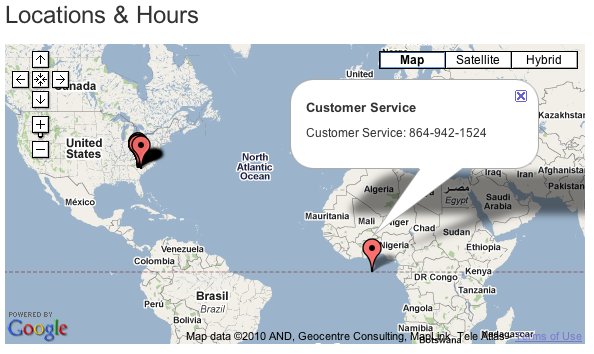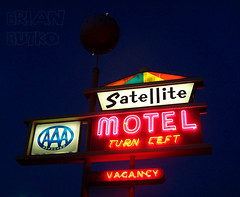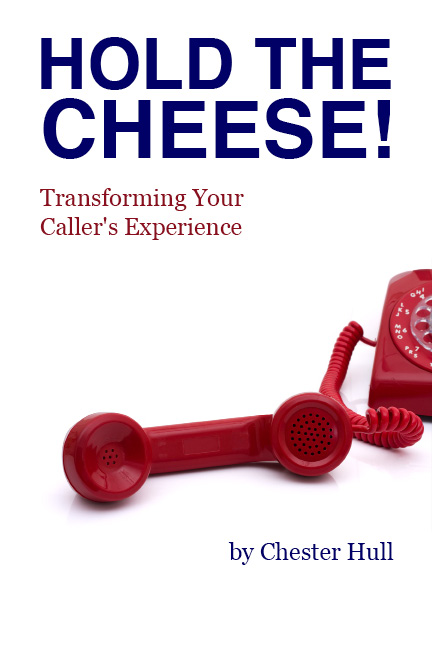HOT POINTS for The Week of August 30, 2010
Blaine Parker www.slowburnmarketing.com
The inspiration for this somewhat snarky little headline comes from a recent conversation about the unfortunates who are saddled with the title “Creative Director.”
What happens to the unfortunates is that they often have little or no experience being Creative Directors–but they approach their job with a zeal befitting William Wallace sacking York.
And the entire time, of course, they’re focused on being “creative.”
As they should. After all, that’s why they were hired. Right?
NOT SO FAST…
Despite the obvious (and unfortunate) wording, the job of a Creative Director is not to “be creative.”
The job of a Creative Director is to be strategic.
Now, in advertising agencies (at least, in the good ones) there’s an understanding of this.
But in many other environments where people generate creative product, there isn’t a whole lot of comprehension about this.
The question being asked is, “How can I be creative now?”
But the real question should be, “How can I bring a new creative slant to this strategy?”
ADVERTISING LIVES AND DIES BY STRATEGY
It doesn’t matter how creative you are. If you have no strategy, if you don’t have the finger on the pulse of your target audience, you’re whistling into the wind.
Once upon a time, I was asked why a very, very creative commercial wasn’t working.
The message was aimed at CPAP users. In case you don’t know, that stands for Continuous Positive Airway Pressure. A CPAP is a machine with a hose and a mask worn by people with sleep apnea. Without the CPAP, side effects can be brain damage and death.
YAY, VEGETABLES & CORPSES!
The commercial in question was loaded with bad comedy. It wasn’t generating many phone calls, but boy was it creatively comic. Just what someone who wears a machine to prevent brain damage and death wants to hear.
My solution was to throw out all the creative comedy and say simply this: “You have a CPAP and you hate it.”
Boy,that is not creative in any way.
But it sure is strategic.
It resulted in a 400% increase in call volume overnight.
THE OLD CREATIVE WAS MERELY “CREATIVE…”
But the new creative was strategic.
It certainly wouldn’t win any awards.
But then, was that really the goal?
Or was the goal to generate calls from people in the target demo, who happened to be suffering from a potentially fatal condition?
And if they have a potentially fatal condition, do they really want to hear jokes about it? Based on the anecdotal evidence (i.e., call volume), the answer was absolutely, unequivocally, No.
Know to whom you’re speaking, and know what’s important to them.
For a potent example, look at the single most “creative” campaign around right now.
IS IT THE ADVERTISING YOUR ADVERTISING COULD SMELL LIKE?
Sales of Old Spice Body Wash are up 107%.
And that Isaiah Mustafa “I’m On A Horse” campaign, despite being enormously creative and amusing, is also incredibly strategic. (Body wash does not come with potential brain damage or death. One has license to entertain.)
The writers from Wieden + Kennedy knew exactly to whom they were speaking, new exactly what was important to that person, and knew exactly how to execute the advertising.
All of it.
That campaign is insanely strategic. It was a couple of years in the making. Since the original spot launched in February of this year, there have been over 100 viral videos created as part of the campaign, often responding to emails about the advertising.
Merely being “creative” is not what Old Spice is about. Applying creativity using a relevant and strategic methodology is paramount.
AND IT ALL BOILS DOWN TO ONE, SINGLE INDIVIDUAL…
The customer.
If you’re writing CPAP advertising, you have to know what’s important to the CPAP user–who could possibly be facing death.
If you’re writing body wash advertising, you have to know what’s important to the body wash buyer–and WHO the body wash buyer is. Old Spice Body Wash is made for men, but the advertising is targeted at women–because women make the vast majority of body wash purchases. And–this is key–the men are still able to laugh at the commercials right along with the women.
If you’re imaging a rock station, you need to know what’s important to the rock listener–who’s listening at least for fun, possibly as a lifestyle choice, and possibly even as a way to define himself. Those imaging promos need to be ABOUT that listener.
If you’re writing advertising for an evangelical Christian women’s conference, you need to know what’s important to evangelical Christian women.
This all sounds obvious, right?
You’d be amazed how frequently the customer is overlooked.
I AM DEFINITELY NOT AN EVANGELICAL CHRISTIAN WOMAN
If you must know, I’m a wayward Episcopalian male of a certain age. I also happen to have an uncle with an engineering degree from MIT who’s a Benedictine monk. Go figure. (This is about as theological as we’re going to get here.)
And when tasked with writing advertising for a conference for that evangelical Christian woman, I had to crawl inside her psyche.
Which is why, 15 minutes after I submitted the copy for approval, my phone rang. It was the client (who DOES happen to be an evangelical Christian woman). She said, “Blaine, I don’t know how you did this, but it’s amazing. We’re all in tears over here.”
That’s one of the single best compliments I’ve ever had on my writing: women crying. (For the right reason.)
And frankly, it’s easy–once you push your creative ego out of the way and become the customer. All it takes is being strategically creative.
I didn’t just pull some stupid comedy out of a hole in MY head.
I considered where the CUSTOMER’S head was at and what mattered to her as regards the conference. Then, I pushed the Episcopalian adult male out of the way, and wrote from that woman’s perspective.
That’s just one element of strategic creativity.
BEING STRATEGIC IS KEY–AND SO IS CARING ABOUT THE PROSPECT
Screenwriting guru Robert McKee has a list of 10 Commandments he distributes to all his writing students. McKee’s Commandment #6 is: “Thou shalt respect your audience.” This is what he calls “the anti-hack commandment.” His assertion is that hack writers are cynics who do not respect the people for whom they are writing.
(I personally believe that “hack writing” is much more complex than this, and have proudly referred to myself as a hack from time to time. But in the interests of discussing Creative Strategy, we’re sticking with McKee’s definition for now.)
So, if you don’t know what your audience cares about, you don’t care that you don’t know what they care about, and you don’t try to write in any way that respects them, you basically just whack down words on a page and walk away…you’re a hack.
Yep. That’s contemporary cynicism all right.
And if you don’t know your audience, if you don’t respect them, you can’t be strategically creative on their behalf.
CALL ME A COCKEYED OPTIMIST, BUT I DO BELIEVE THE BEST SELLING COMES FROM A PLACE OF LOVE.
Love your customer, and do what it takes to do the right thing for him or her.
And that includes understanding him or her, knowing what he or she wants, knowing what matters to him or her, and knowing what will make him or her respond.
That’s why, as advertising people, it is incumbent upon us to pay attention to the zeitgeist. What our customers know and care about is out there.
All we have to do is lose our egos, listen to reality, and pay attention to what it says.
As always,
Blaine Parker
Your Lean, Mean Creative Director in Park City




 Facebook
Facebook LinkedIn
LinkedIn Twitter
Twitter



